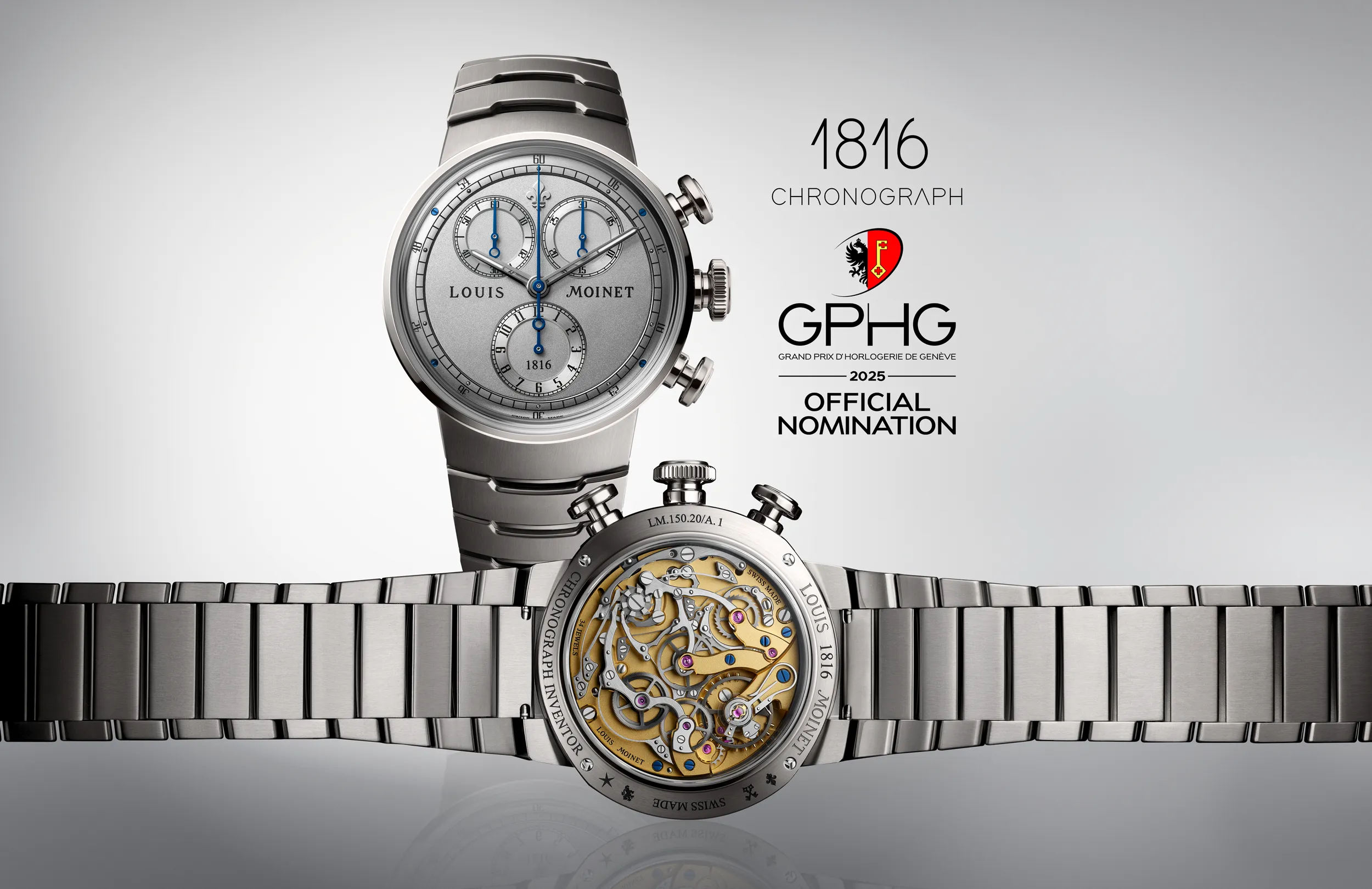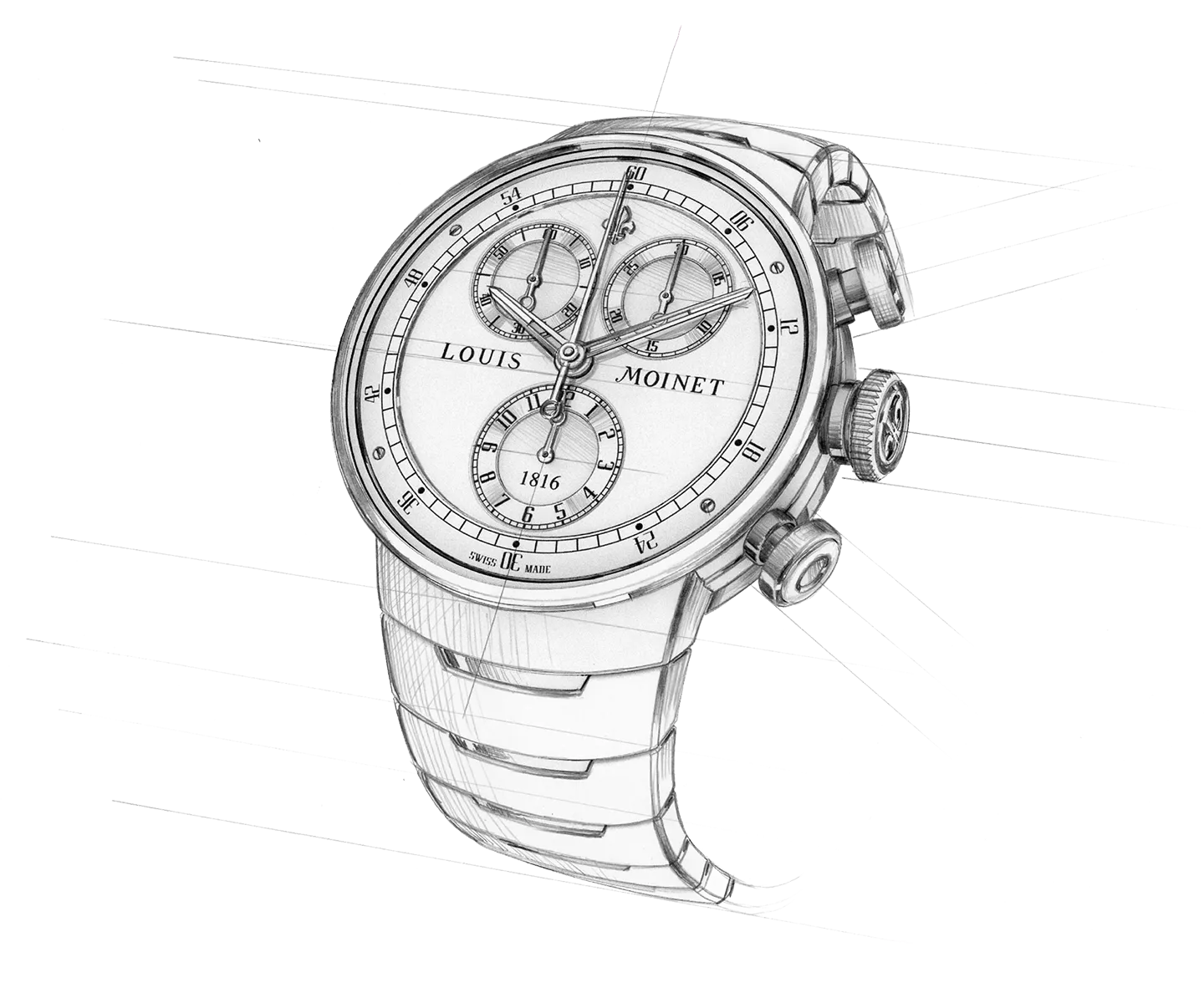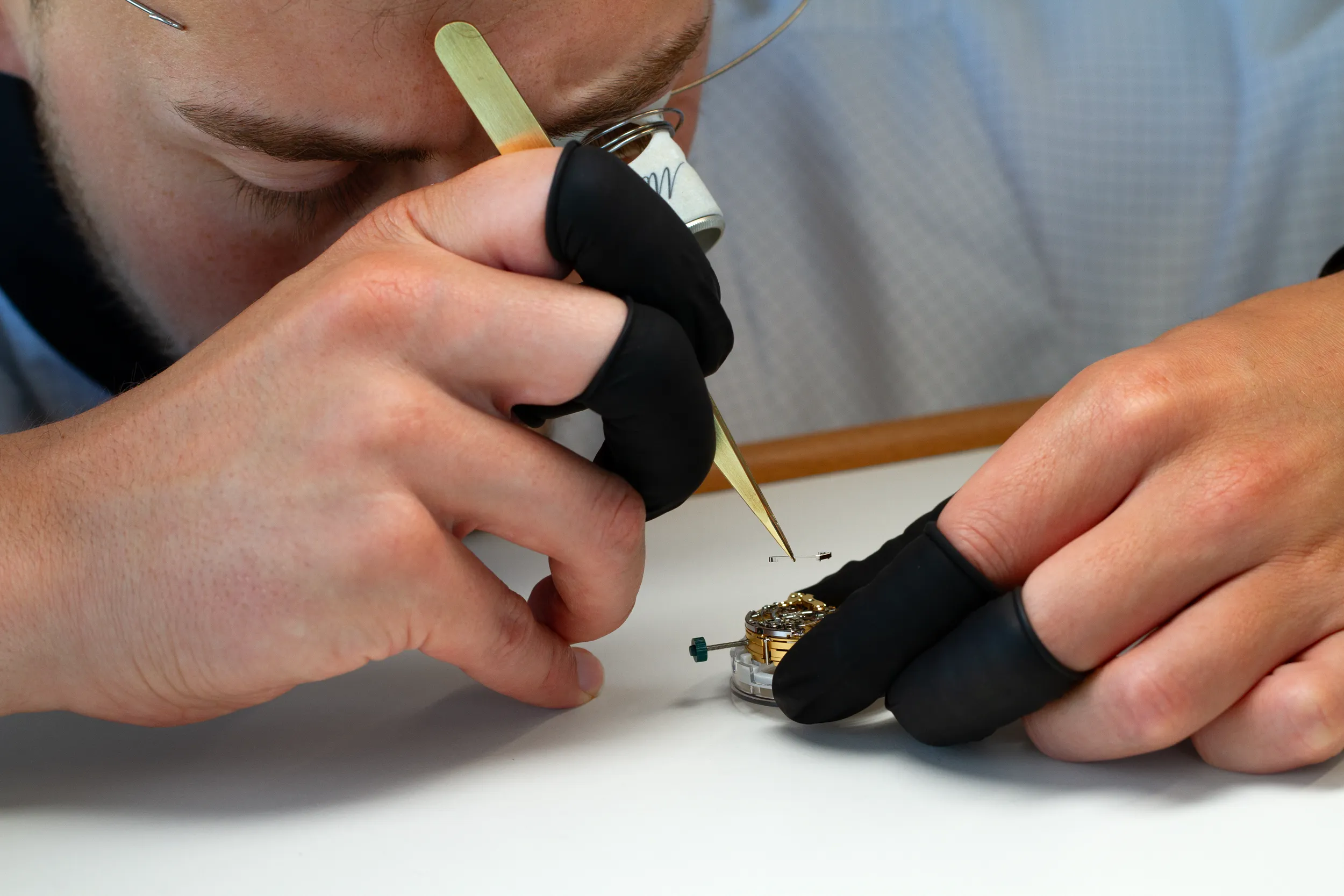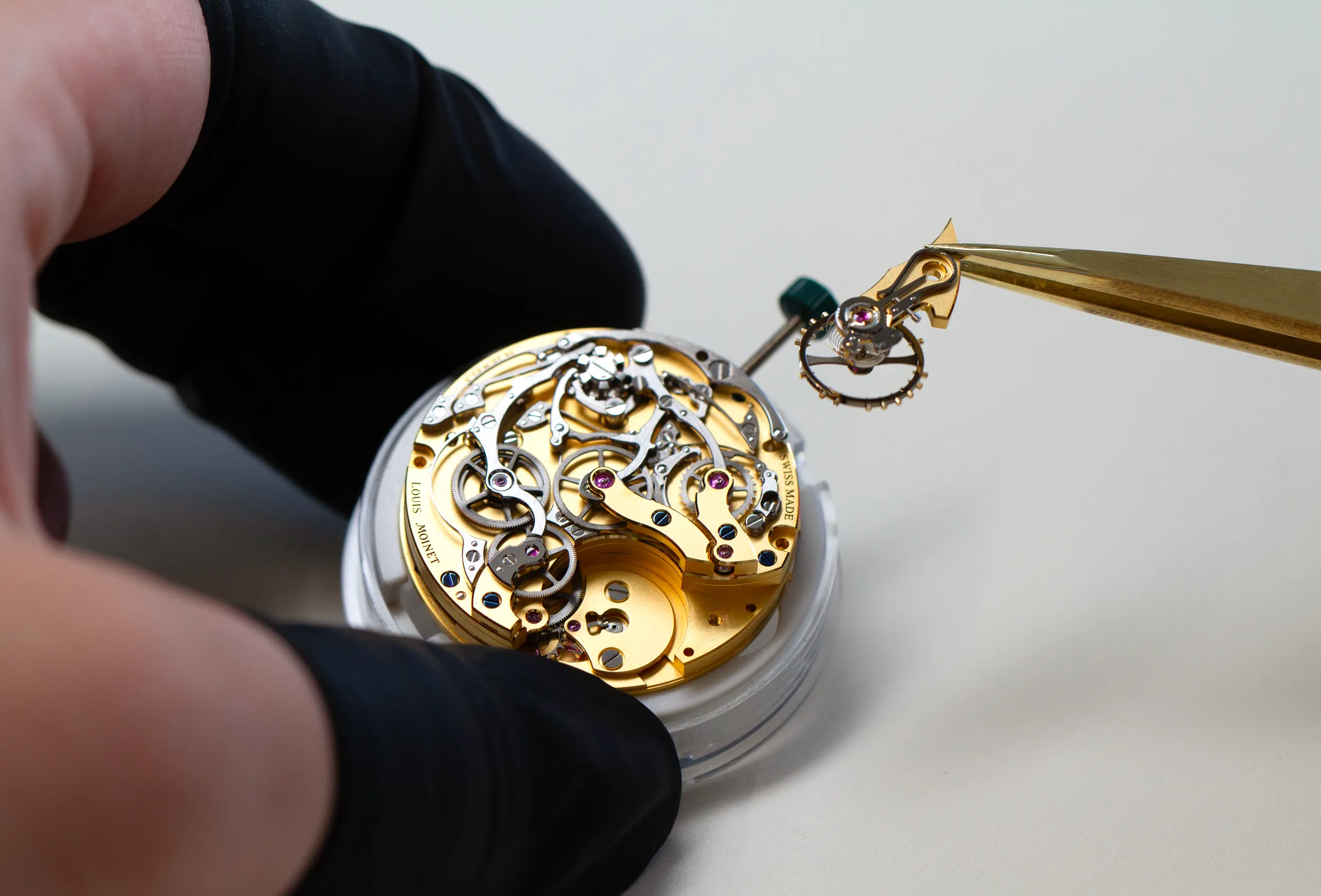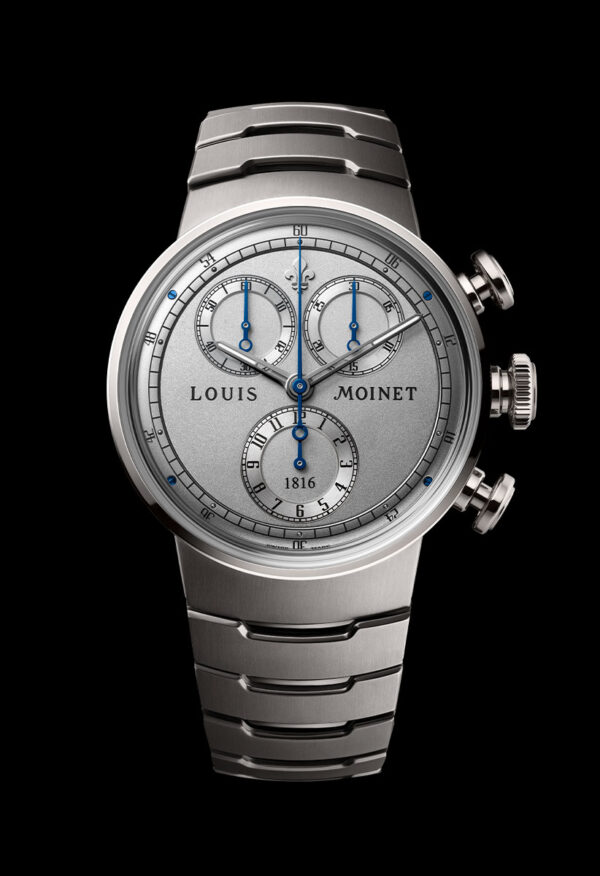1816
chronograph
An icon reborn
1816 was one of the major turning points in watchmaking history. It is the year in which the great watchmaker Louis Moinet completed the world’s first chronograph.
Today, the 1816 made by Les Ateliers Louis Moinet shines the spotlight onto the legacy of this pivotal masterpiece. The watch remains true to the essence of its original model and is now ready to write the next chapter in its history.

“Our roots are our future! And the 1816 is proof of this. Its originality and its sheer power carry the heritage of a pioneering work.”
Jean-Marie Schaller
CEO & Creative Director
1816
The year of the world’s first chronograph
Louis Moinet originally designed his novel instrument to carry out celestial observations, which required precise calculations of the speed at which the stars moved. This “thirds counter” (Compteur de tierces) was the first of its kind and a testament to the genius of its creator. Moreover, it was the first chronograph ever built. Louis Moinet’s brilliant creation incorporated numerous innovations, some of which would not be repeated until a century later.
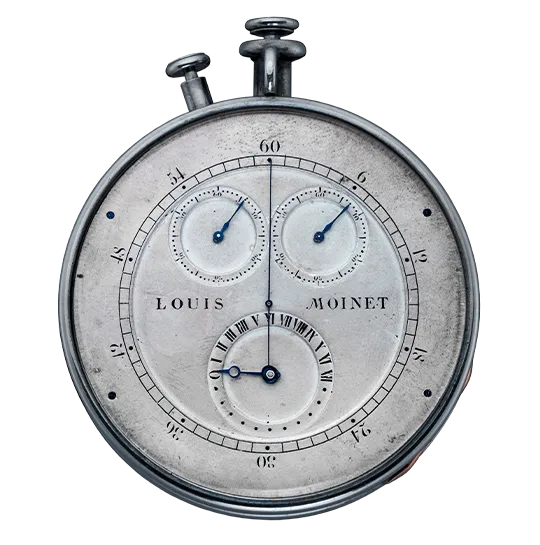
The world’s first chronograph
Louis Moinet, 1816
Reinventing heritage
The 1816 chronograph
A closer look at Les Ateliers Louis Moinet’s new 1816 chronograph means taking a deep dive into over 200 years of history through a timepiece exhibiting a resolutely contemporary style. The DNA of Moinet’s Compteur de tierces, which with its sober, functional, and, for its time, avant-garde design, emerges in every detail. The aesthetic codes of the original model have been given a totally new interpretation but one that is always in keeping with traditional haute horlogerie.
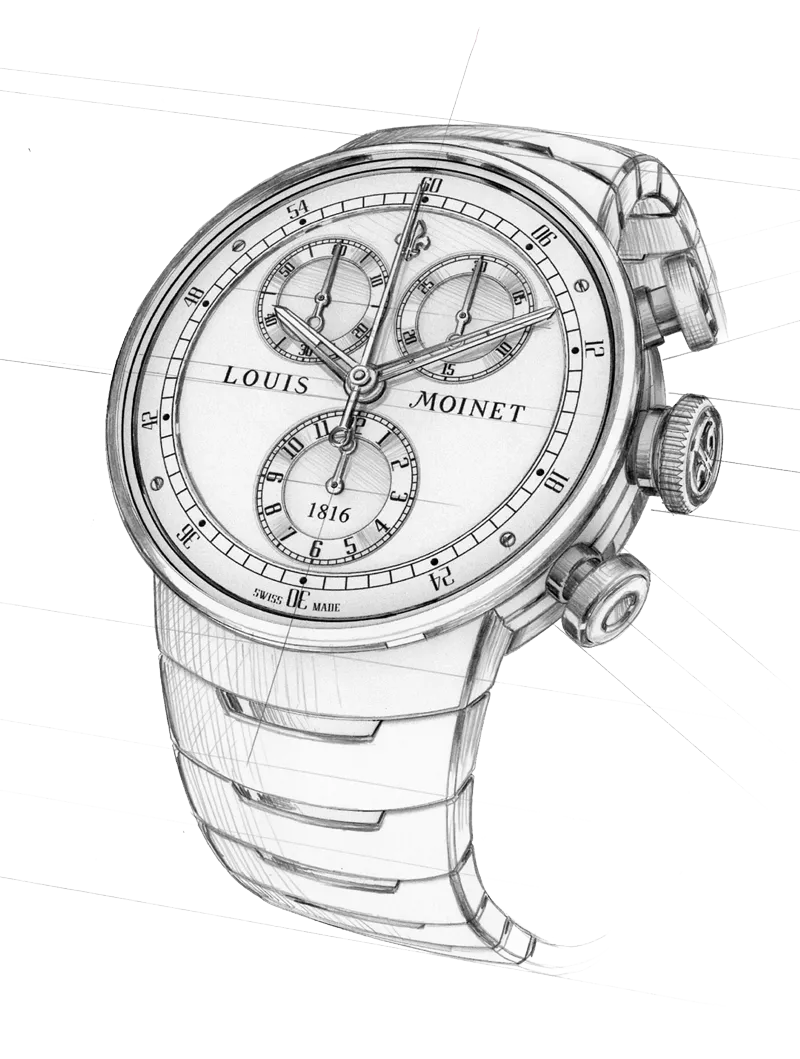
The double-gadroon case, in polished and satin-finished grade 5 titanium, measures 40.6 millimetres in diameter and is composed of 51 parts. It retains its original Directoire style semi-bassine design with a smooth case middle. Two sober pushers frame the winding crown, which is decorated with a fleur-de-lys, the emblem of Bourges, Louis Moinet’s birthplace. The elegant and timeless 1816 was made to be very comfortable on the wrist.
The slightly vaulted dial is both legible and functional. The chronograph hand is clearly visible and shares space on the dial with two totalisers — one for the hours, the other for minutes — along with a small seconds subdial.
The whole is surrounded by a minute and seconds chapter divided in increments of six, recalling the original sixtieths of a second indication.
The grade 5 titanium bracelet integrated into the case is the very first metallic bracelet developed by Les Ateliers Louis Moinet. It was named “Project BRIDGE” by the technical department for its wide, elegant, arch-shaped links. This truly contemporary bracelet exhibits a singular, unclassifiable design. It was conceived as a natural extension of the case. The progression of links articulates in a natural continuity, hugging the wrist while remaining perfectly balanced. Their dimension is underscored by satin and polished finishing, creating a sculptural whole that is both fluid and ergonomic.
This full-fledged haute horlogerie timepiece appeals to the connoisseurs for its assertive look.
The 1816, a new in-house calibre
A unique concept invoked by an icon

The challenge was clear: to preserve the very essence of the world’s very first chronograph while creating an original movement that would meet the tough standards of haute horlogerie. Les Ateliers Louis Moinet’s chosen strategy was to develop an integrated calibre designed from scratch. From the outset, the architecture was dictated by the special layout of the counters on the original 1816 timepiece. This architectural fidelity paid tribute to Louis Moinet’s own avant-garde vision that demanded perfect functionality, mechanical elegance, appealing aesthetics, and top legibility from his creation.
The result is a calibre made up of 330 components, including 34 jewels, and beating at 28,800 vibrations per hour. It was especially developed for the 1816 chronograph as a one-of-a-kind mechanism that preserves the DNA of the Compteur de tierces, while adding a contemporary touch.
The heart of the matter
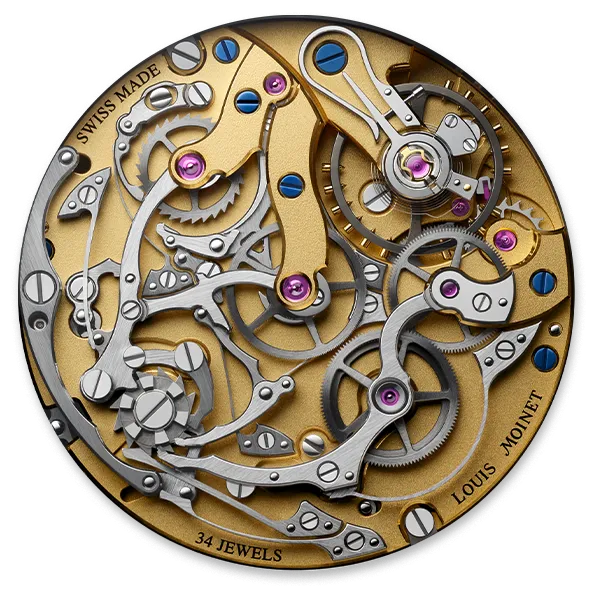
The transparent case back reveals the spectacular movement with its intricate chronograph mechanism. The precise interplay of shaped components, the overlapping bridges, and symphony of gearwheels demonstrate the sheer sophistication of the chronometric controls, and recalls the magnificent horological creations of the Vallée de Joux, Switzerland’s famous watchmaking hub.
The eye is immediately drawn to the many strong contrasts: steel parts with outstanding finishes versus the golden hue of the bridges, the deep blue of the screws versus the intense red of the rubies.
The architecture is drawn along two distinct visual axes. One is the diagonal line stretching from the clutch wheel to the minute totaliser wheel. It lies at a right angle to the second line linking the column wheel to the balance wheel. At the centre of this intricate geometry is the chronograph wheel, the focal point of the whole ensemble.

The technical excellence
of Haute Horlogerie
The 1816 calibre, providing 48 hours of power reserve, is manually wound, which will appeal to connoisseurs who value the tactile ritual of winding their timepiece. They will also appreciate the instantaneous minute totaliser, the column wheel, and the swan-neck regulator, all hallmarks of authentic watchmaking craftsmanship and quality.
The instantenous minute counter
For exact time reading
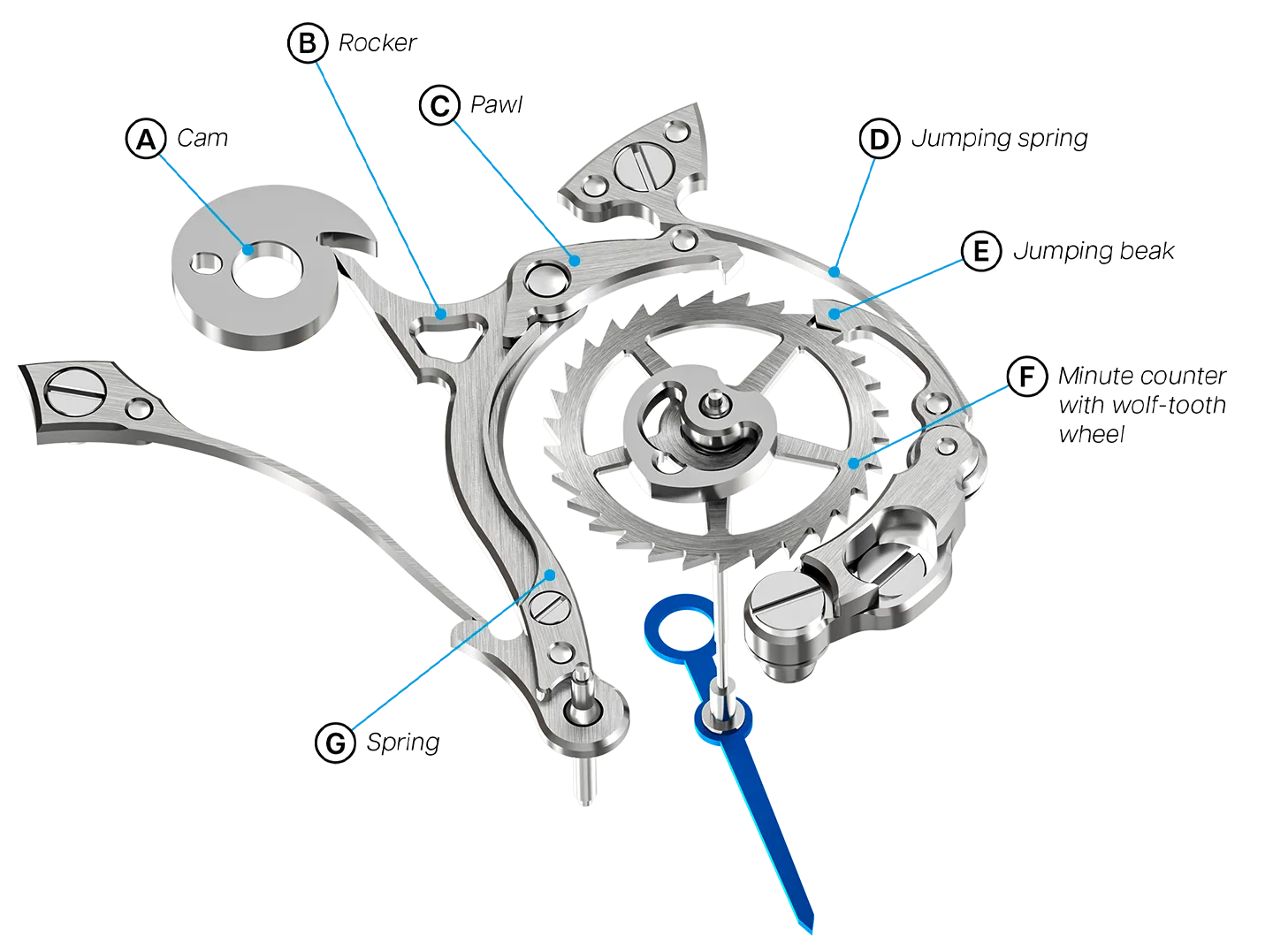
The minutes are displayed with extreme precision on an instantaneous totaliser. Unlike a trailing counter, whose hand advances slowly and continuously, the hand of the jumping minute counter instantly moves from one graduation to the next when the 60th second is reached.
Here is how the mechanism works: The cam A releases the rocker B when the second hand reaches the 60th second. The rocker drives the pawl C which advances the wolf-tooth minute counter wheel F by exactly one position. A spring G keeps the pawl in constant contact with the wheel. The jumping mechanism E locks the wheel precisely, and is supported by the jumping spring D ensuring the minute hand advances instantaneously and lines up perfectly with the next graduation. In addition, an isolator is integrated into the rocker, which lifts the pawl when resetting, in order to prevent any risk of damage to the mechanism. This design ensures precise and reliable operation of the minute counter over time.
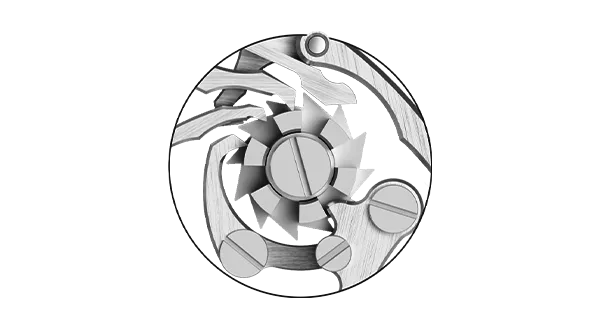
The column wheel
The crown jewel of chronograph sophistication
Introduced in 1862, the column wheel is a ratchet fitted with anywhere from 6 to 9 triangular teeth, or columns, at right angles to each other. It precisely coordinates the different phases of the chronograph: start, stop, and zero reset.
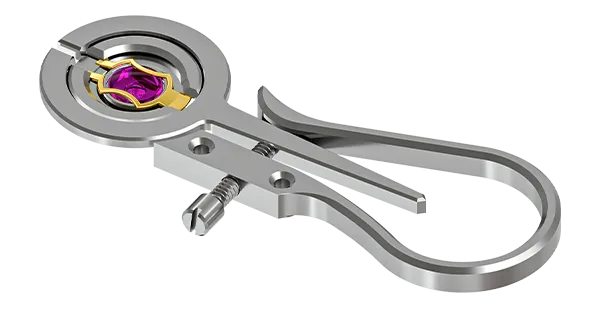
The famous swan-neck regulator
An ever-popular setting standard
The swan-neck regulator is an adjustment device highly prized for its sleek, elegant form. Invented and patented in 1867, this sophisticated mechanism consists of a long spring curved around a lever with a micrometer screw that enables precise fine-tuning of the watch’s rate.

